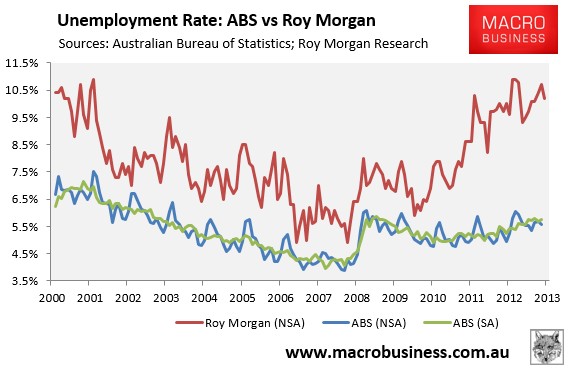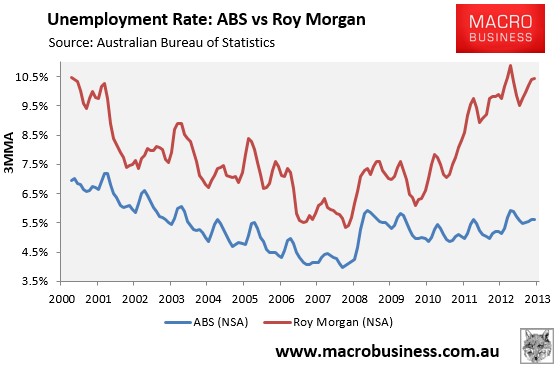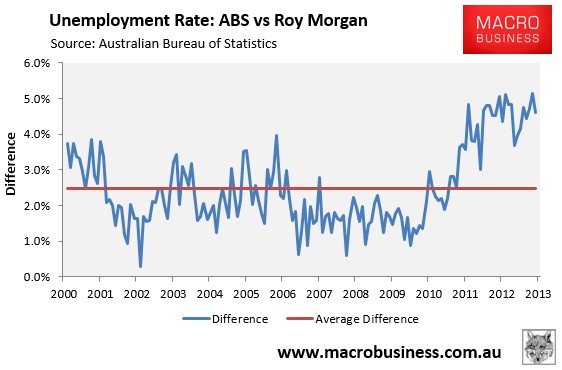
Roy Morgan Research (RMR) last night released its unemployment estimate for the month of November, which registered a decrease in the unemployment rate to 10.2% from 10.7% in October (see next chart).

As explained previously, RMR measures employment differently from the ABS:
According to the ABS definition, a person who has worked for one hour or more for payment or someone who has worked without pay in a family business, is considered employed regardless of whether they consider themselves employed or not.
The ABS definition also details that if a respondent is not actively looking for work (ie: applying for work, answering job advertisements, being registered with Centre-link or tendering for work), they are not considered to be unemployed.
The Roy Morgan survey, in contrast, defines any respondent who is not employed full or part-time and who is looking for paid employment as being unemployed…
Since Roy Morgan uses a broader definition of unemployment than the ABS, it necessarily reports a higher unemployment figure. In addition, Roy Morgan’s measure tends to be far more volatile, owing to the fact that it draws on a smaller sample than the ABS and is not seasonally adjusted.
Both the official ABS unemployment rate and the unofficial RMR measure tracked each other closely until mid-2010 before diverging sharply (see next chart).

Based on this latest result, the difference between the two non-seasonally-adjusted measures has narrowed to 4.6%, which is still well above the average 2.5% divergence since the RMR series commenced in January 2001 (see next chart).

The reasons behind the big divergence between the RMR and ABS unemployment measures since mid-2010 remains a mystery, but probably has something to do with Roy Morgan’s picking-up discouraged workers. Because the measure is not seasonally adjusted it will probably jump to new highs early next year school leavers hit the jobs market.
In any event, the trend in both surveys suggests that the Australian labour market remains soft, with jobs growth below the level required to soak-up the growing population.

